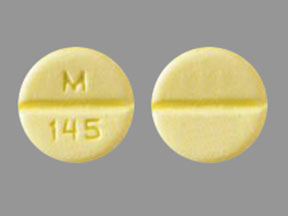Digitek and Alcohol/Food Interactions
There is 1 alcohol/food/lifestyle interaction with Digitek (digoxin).
Digoxin Food/Lifestyle
Minor Food Interaction
Administration of digoxin with a high-fiber meal has been shown to decrease its bioavailability by almost 20%. Fiber can sequester up to 45% of the drug when given orally. Patients should be advised to maintain a regular diet without significant fluctuation in fiber intake while digoxin is being titrated.
Grapefruit juice may modestly increase the plasma concentrations of digoxin. The mechanism is increased absorption of digoxin due to mild inhibition of intestinal P-glycoprotein by certain compounds present in grapefruits. In 12 healthy volunteers, administration of grapefruit juice with and 30 minutes before, as well as 3.5, 7.5, and 11.5 hours after a single digoxin dose (0.5 mg) increased the mean area under the plasma concentration-time curve (AUC) of digoxin by just 9% compared to administration with water. Moreover, P-glycoprotein genetic polymorphism does not appear to influence the magnitude of the effects of grapefruit juice on digoxin. Thus, the interaction is unlikely to be of clinical significance.
References (2)
- Darcy PF (1995) "Nutrient-drug interactions." Adverse Drug React Toxicol Rev, 14, p. 233-54
- Becquemont L, Verstuyft C, Kerb R, et al. (2001) "Effect of grapefruit juice on digoxin pharmacokinetics in humans." Clin Pharmacol Ther, 70, p. 311-6
Switch to consumer interaction data
Digitek drug interactions
There are 441 drug interactions with Digitek (digoxin).
Digitek disease interactions
There are 13 disease interactions with Digitek (digoxin) which include:
- accessory AV pathway
- bradyarrhythmia/AV block
- hypercalcemia
- hypocalcemia
- hypokalemia/hypomagnesemia
- preserved left ventricular ejection
- renal dysfunction
- vasoconstriction
- ventricular arrhythmia
- acute MI
- hyperthyroidism
- hypothyroidism
- thiamine deficiency
More about Digitek (digoxin)
- Digitek consumer information
- Check interactions
- Compare alternatives
- Drug images
- Side effects
- Dosage information
- During pregnancy
- Drug class: group V antiarrhythmics
- Breastfeeding
Related treatment guides
Drug Interaction Classification
| Highly clinically significant. Avoid combinations; the risk of the interaction outweighs the benefit. | |
| Moderately clinically significant. Usually avoid combinations; use it only under special circumstances. | |
| Minimally clinically significant. Minimize risk; assess risk and consider an alternative drug, take steps to circumvent the interaction risk and/or institute a monitoring plan. | |
| No interaction information available. |
See also:
Further information
Always consult your healthcare provider to ensure the information displayed on this page applies to your personal circumstances.


